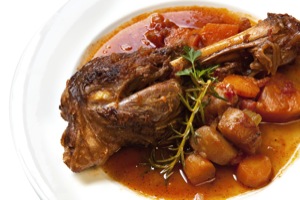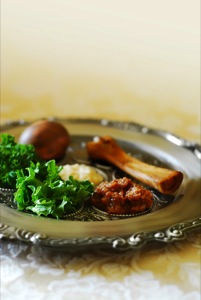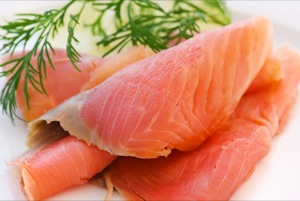
Most holidays I can think of encompass foods that are saturated in tradition – whether it is familial, religious or secular. For me, Easter encompasses all three, each lending a particular aspect to the annual brunch I throw. I also incorporate foods of another religious celebration because of the diversity and respect it contributes to the overall meal: Passover.
This Jewish celebration of freedom from slavery normally falls close to Easter and is readily recognized, but I feel it is less understood than the Easter story. I was originally going to write an Easter specific column but with the aforementioned thought, I thought I would outline Passover for the non-Jewish reader.
I am not Jewish nor am I an expert by any means, but I have participated in about a dozen Seders and admire the passion and extreme wealth of ancestral brotherhood associated with it. A Seder is the name of the meal eaten at sundown on the first day of Passover and literally translates to “order” or “sequence” for good reason. During the meal, participants recount the story of Exodus through religious readings from the Haggadah and use specific foods on the Seder plate to symbolize different aspects of their troubles and ultimate freedom from Egyptian slavery.
In the story of Exodus, God sends ten plagues over Egypt to show his power and ultimate want for the freedom of the Jews. These plagues are recognizable in celluloid accounts of the End of Days (think locusts and frogs raining from the sky) and in fact the entire story of Exodus is portrayed again and again in films. The final and most extreme plague was the death of all the first born sons (which would include the pharaoh’s). The Jews were instructed to slaughter a spring lamb and smear the blood above their doors, indicating to the sweeping Angel of Death to “Passover” the abode, sparing the Jewish children.

Other aspects of the Exodus are presented on the Seder plate which can vary slightly depending on sect but maintain homogeneity in the symbolism: First, raw vegetables such as celery, parsley or endive are dipped into salt water that represents the tears cried during the enslavement; next is a lamb shank that is there representing the paschal lamb sacrificed to save their first born; a boiled egg is used to symbolize the mournful reminder of the destroyed temple; unleavened bread, or matzo (probably the most recognizable), shows the haste in which the Jews left Egypt allowing no time for their bread to rise; bitter herbs, such as horseradish, are eaten to remind the participants of the cruel and bitter treatment endured while enslaved; and lastly a mixture of fruit wine and nuts, called haroset, resembles the mortar used while building the pyramids.
I have made a haroset for a Seder and also use it as chutney for roasted lamb on Easter. I mix together 2/3 cup dried figs, 2/3 cup dried apricots 1/3 cup pitted dates all finely chopped with 1 1/3 cups toasted-chopped walnuts and 1/4 cup Manischewitz. I like to season the mixture to taste with cinnamon, cayenne and ginger and substitute a Riesling when making it for a non Seder fare.
Of course, you cannot fill up on matzo and bitter herbs, so once the readings are over and remembrance is given to the ancestral strife, it’s time to eat. Many aspects of the Seder plate can be incorporated into the Passover meal such as matzo ball soup, horseradish mashed potatoes, braised lamb shanks or a parsley and endive salad.
Another item frequently on the table and also present at my Easter is fish. I will normally poach a whole salmon and doll it up à la the ’90s, but another (and much easier) option is to cure some salmon at home. I like to use roasted beets (included recipe) that stain the outer edge of the fish with a nice bright red that contrasts nicely with the pinkish-orange hue.
Whether Easter or Passover, Christmas or Hanukkah, or Kwanzaa for that matter, look to other cultures and religions for your meals’ inspiration. Food is argued to be the building blocks of cultural evolution and I can think of no better way to broaden your mind and pallet. Perhaps this Easter you might sneak in some Seder ingredients of your own.
bobby’s recipe
Beet cured salmon
This recipe will have to be pre-planned as it takes four days to cure.
Dry Mix:
Combine:
1/4 cup salt
1/4 cup sugar
2 tablespoons crushed white peppercorns
Zest of 2 lemons, 3 limes and 1 orange
Teaspoon curry
Roast two large beets wrapped in foil with olive oil at 450 degrees for 45 minutes. Cool, rub off the skins and finely grate.

Take a 1/2 inch thick, 3 pound, boneless salmon filet with the skin on and cut in half width-wise.
Apply the dry rub evenly to the flesh of both halves.
Place a single layer of fresh dill sprigs on one half of the flesh and place the other half on top so that the flesh of both halves are together.
In a Pyrex dish, lay down enough plastic wrap that will cover the bottom and overlap the sides by about half the width of the Pyrex.
Sprinkle half of the grated beet on the bottom, add the salmon, sprinkle the remaining beet on top and pour in 1/4 cup vodka.
Wrap the fish tightly with the plastic wrap and weigh down with another Pyrex filled with soup cans or a brick.
Refrigerate for four days and flip every 12 hours.
Once cured, rinse off all excess dry rub and dry the salmon.
To serve: Slice the salmon thinly width-wise with some softened cream cheese and endive spears.









